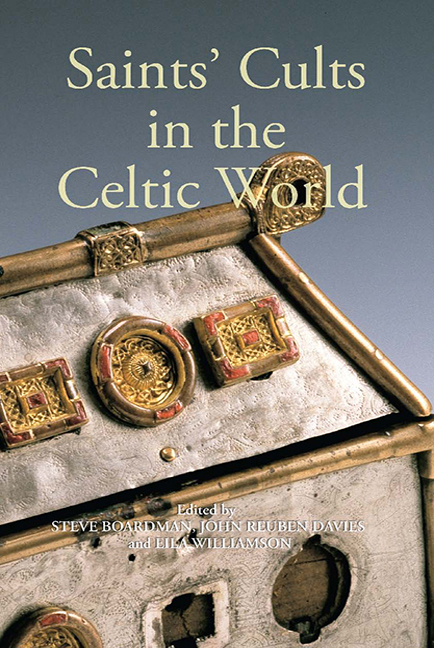Book contents
- Frontmatter
- Contents
- List of Illustrations
- List of Contributors
- Abbreviations
- Editors’ Preface
- 1 Rochester, Hexham and Cennrígmonaid: the movements of St Andrew in Britain, 604–747
- 2 The cults of Saints Patrick and Palladius in early medieval Scotland
- 3 Personal names and the cult of Patrick in eleventh-century Strathclyde and Northumbria
- 4 Bishop Kentigern among the Britons
- 5 Adjacent saints’ dedications and early Celtic History
- 6 Cuthbert the cross-border saint in the twelfth century
- 7 David of Scotland: ‘Vir tam necessarius mundo’
- 8 The cult of Saint George in Scotland
- 9 The cult of the Three Kings of Cologne in Scotland
- 10 The medieval and early modern cult of St Brendan
- General Index
- Miscellaneous Endmatter
8 - The cult of Saint George in Scotland
Published online by Cambridge University Press: 11 May 2017
- Frontmatter
- Contents
- List of Illustrations
- List of Contributors
- Abbreviations
- Editors’ Preface
- 1 Rochester, Hexham and Cennrígmonaid: the movements of St Andrew in Britain, 604–747
- 2 The cults of Saints Patrick and Palladius in early medieval Scotland
- 3 Personal names and the cult of Patrick in eleventh-century Strathclyde and Northumbria
- 4 Bishop Kentigern among the Britons
- 5 Adjacent saints’ dedications and early Celtic History
- 6 Cuthbert the cross-border saint in the twelfth century
- 7 David of Scotland: ‘Vir tam necessarius mundo’
- 8 The cult of Saint George in Scotland
- 9 The cult of the Three Kings of Cologne in Scotland
- 10 The medieval and early modern cult of St Brendan
- General Index
- Miscellaneous Endmatter
Summary
On 17 July 1385 the English king Richard II was in Durham, overseeing the assembly of an army to counter a Franco-Scottish force that threatened England's northern counties. King Richard ordered the production of a series of ordinances to govern the conduct of the host that was about to head north towards the Anglo-Scottish border. Among a number of detailed points, the ordinances declared that the English king's troops were to display the arms of St George and that if any of the enemy were found bearing the insignia of the saint they were to be put to death, even after capture. The regulations of 1385 provide one example, among many others, of the fourteenth-century English identification of St George as the special protector of the armies that furthered the ambitions of the English monarchy. By the second half of the fourteenth century the association of St George with the English nation-in-arms was unambiguous. English forces were distinguished by their wearing of George's cross, they marched under banners bearing the same device, and had adopted the saint's name as their characteristic war cry.
The promotion of St George as a particular, indeed the distinctive, patron of the English monarchy and nation in the fourteenth century and thereafter has been a widely studied phenomenon. A critical development in securing the association between the saint and the English royal line was Edward III's establishment of the Order of the Garter in 1348 as a chivalric order with St George as its principal spiritual focus. Recent historical analysis has brought out the implications of the growing cult of St George in a peculiarly English context, and has explored the way in which the figure of St George promoted certain images of monarchical power, reflected and aided the definition of an ‘English’ national identity in the late medieval period, and may have encouraged or fostered a greater sense of social coherence within the realm. A slightly different perspective on the George cult has emerged in the work of David Morgan. Morgan has encouraged historians to view the growing popularity of St George within a wider European context, and to place less emphasis on the uniqueness of the English interaction with the cult.A number of points made by Morgan can be noted.
- Type
- Chapter
- Information
- Saints' Cults in the Celtic World , pp. 146 - 159Publisher: Boydell & BrewerPrint publication year: 2009



